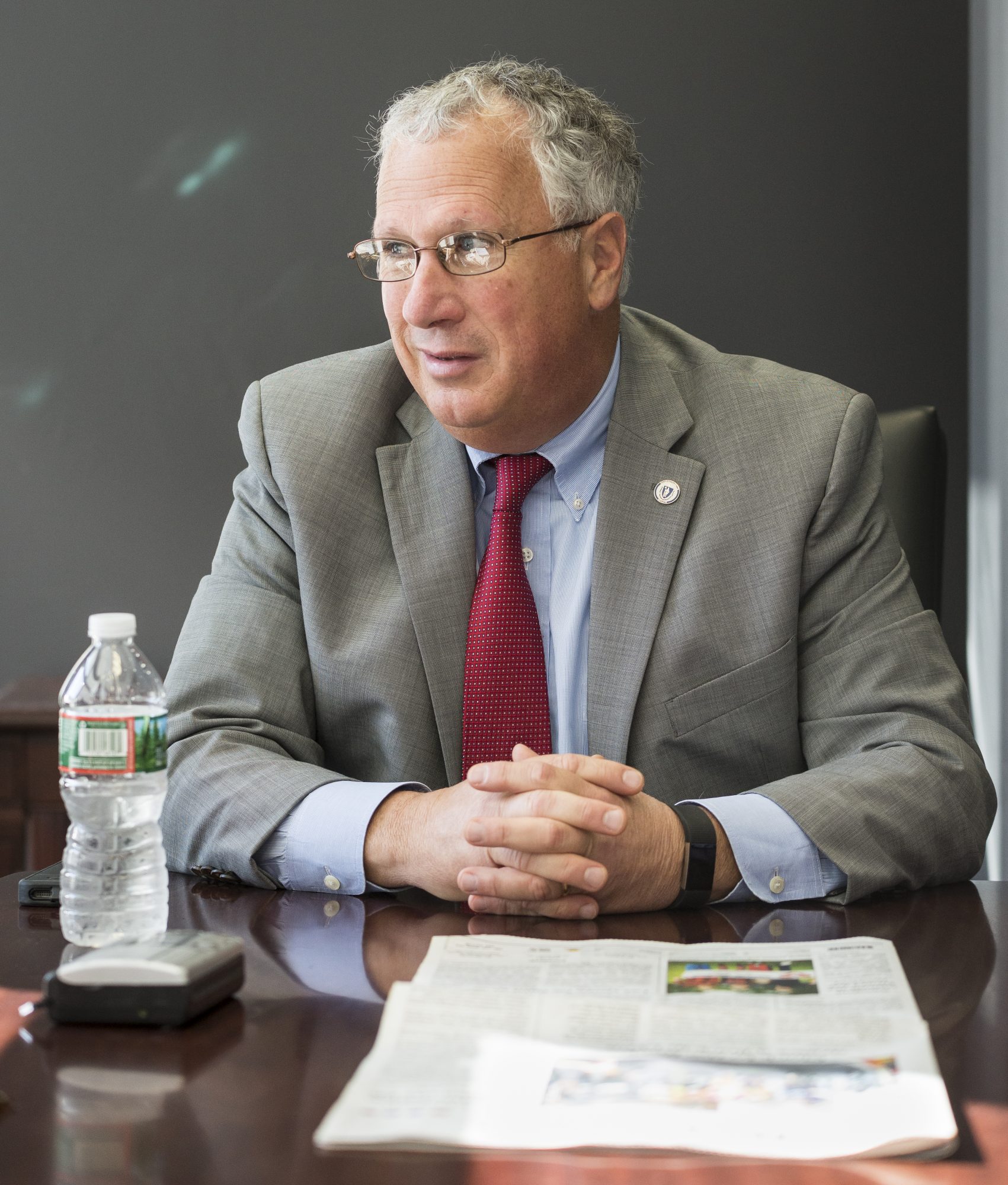LYNN — With the state budget now being reviewed by Gov. Baker, city officials are ready to factor negotiated health insurance savings and extra state aid into city spending calculations.
Final action by the Legislature on the state budget clears the way for the $368 million Fiscal 2020 city budget approved by the City Council in the spring to be amended to reflect the additional aid and the negotiated savings.
“We’ve been waiting on the numbers,” said Mayor Thomas M. McGee.
The Legislature gave Lynn a $19 million increase in state aid to schools bringing total aid to the city to $185.8 million.
McGee and city unions ratified changes to the city’s self-insured health plan that, McGee said, generate $4.3 million in savings over the next three years.
City Council President Darren Cyr said it will be the end of the summer before official state aid numbers are calculated into the city budget. But he said increased state aid and health insurance savings position city officials to set aside a city budget spending reserve.
Lynn has been subject to a state financial oversight plan for two years that includes recommendations for the city to build a spending reserve.
“The projection is we should have money in the reserve. That savings is going to help us,” Cyr said.
A key element of the restructured health insurance agreement is a boost in city employee contributions to health insurance from 19 percent to 23 percent. Beginning July 1, the contribution increased to 25 percent.
“A lot of time went into this through meeting after meeting. There will be savings — these are the first real substantial changes in over a decade,” McGee said.
Other adjustments to the current plan included a copay increase; a $5 increase in primary care visits and a switch from an open to a “closed” pharmacy plan.
“It’s a much more defined plan. We will see savings there,” McGee said.
The plan’s first-year savings more than offset $825,000 in retroactive raises paid out for the last two years, McGee said.
“This was a modest raise reflective of broader negotiations that saved the city money,” said McGee.
McGee defended the retroactive raises paid to city employees as part of “an agreement that works for both sides.”
“We were able to fit a health agreement and wages into the 2020 budget. Obviously, savings was a key piece,” he said.
But McGee and top city officials aren’t finished negotiating with city unions. Both sides returned to the bargaining table this month and wages are in play as a bargaining topic.
“Both sides will have a position. I am confident that, moving forward, we will have a balanced Fiscal Year 2020 budget,” McGee said.
Sheila O’Neil, president of the 1,740-member Lynn Teachers Union — the largest union in the city — said “compensation is always on the table” when city officials and union representatives sit down to bargain contract terms through 2022.
O’Neil represented the teachers during the health agreement bargaining and she was a member of the health insurance working group that set the stage for bargaining.
Cost concerns and familiarity with the city’s long-time Harvard Pilgrim health insurance plan prompted negotiators to look negatively during health insurance agreement discussions on adopting the state Group Insurance Commission (GIC) plan.
“We have a great insurance plan. People want to stay with their doctors,” said O’Neil.
Lynn Police Association President Tim Donovan said Harvard Pilgrim’s “great diabetes plan” helps Donovan meet his diabetic son’s medical needs. He said switching to GIC would have cost him $4,500 annually out of pocket to get his son the treatment he needs. GIC, said Donovan, “preys on the sick.”
“If you’re someone with medical needs, it’s a lot of out-of-pocket expenses,” he said.
But the senior state revenue department official assigned to be financial watchdog for Lynn told city officials in March that switching to GIC could save the city $13 million with the city reaping $10.4 million in savings and city employees saving $2.6 million in insurance costs.
Those numbers loomed large as the working group sat down to talk about health insurance savings and McGee worked on bridging a $5 million gap in the city budget, even as the city continued payments on a $14 million the state gave the city in 2018.
O’Neil said the working group zeroed in on GIC’s out-of-pocket costs in comparing GIC and other plans to Harvard Pilgrim.
“It’s an extremely significant difference,” she said.
Donovan said adjustments to the existing city employee health insurance plan translates into a $1,500 annual increase in employee premiums and copayments.
Sean Martin, president of International Association of Firefighters Local 739 representing 178 Lynn firefighters, said his members were adamant about keeping Harvard Pilgrim as their insurer.
“Everyone has access to the Partners network. Its availability is pretty much paramount,” Martin said.
Health insurance increased by 35 percent between 2013 and 2018, McGee said, and the city’s $12.5 million share of the $16 million increase accounted for half of the city’s overall municipal budget increase in that time period.
“Lynn is not unique. Everyone is dealing with health insurance,” he said.
Martin said city unions “walked away happy” from the health insurance agreement bargaining table. But like Donovan and O’Neil, he said wages will be on the table when union representatives sit down to bargain with McGee.
“Obviously, everyone is looking for a raise,” said Donovan.

